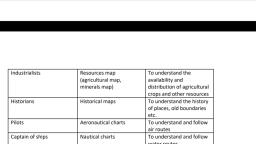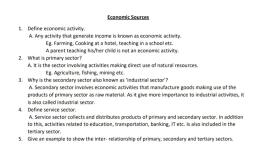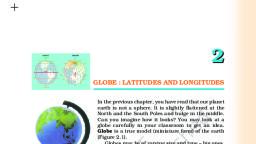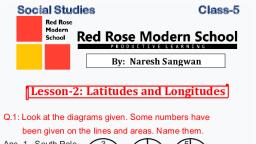Page 1 :
The latitudinal line along the middle of the globe is the longest one. This line of latitude is called, equator., , The angular measurement of the equator is 0 degree (0°), , All the other lines of latitudes are circles drawn parallel to the Equator. Size of the circles, decrease as they move away from the equator., , Equator divide the Earth into Northern hemisphere and Southern hemisphere., , Latitudes in the northern hemisphere are called north latitudes., , Latitudes in the southern hemisphere are called south latitudes., , Important latitudes are,, , , , Latitudes Degree, North Pole 90°N, Arctic Circle 66%" N, Tropic of Cancer 23%°N, Equator 0°, Tropic of Capricorn 23%°S, Antarctic Circle 66%°S, South Pole 90°S, , , , , , , , , , , , , , , , , , , , , , , , Longitudes, , It is the angular distances east and west of the standard meridian., , It is the imaginary vertical lines connecting north pole and south pole., , 0° longitude is known as standard meridian ( also known as prime meridian and greenwich,, meridian), , There are 180 degrees of longitudes on either side of the standard meridian., , 0° longitude and the one opposite to it together divide the globe into eastern hemisphere and, western hemisphere., , The longitudes along the eastern hemisphere are called the east longitudes., , The longitudes along the western hemisphere are called the west longitudes., , 3. Rotation, , The spinning of the Earth on t’s own axis is called rotation., Axis :An imaginary line drawn from the north pole to the south pole that passes through the, centre of the earth. It has a tilt of 23.5°, , The Earth takes 24 hours to complete one rotation and it is considered as a day., , Earth rotates from west to east., , Day and Night, , © The rotation of the Earth causes day and night., © The part of the Earth facing the sun due to rotation gets illuminated and experiences day, as the, opposite face doesn’t get sunlight, night is experienced there.


























































